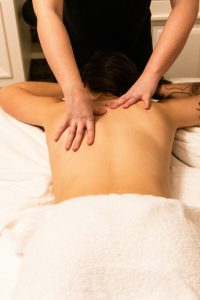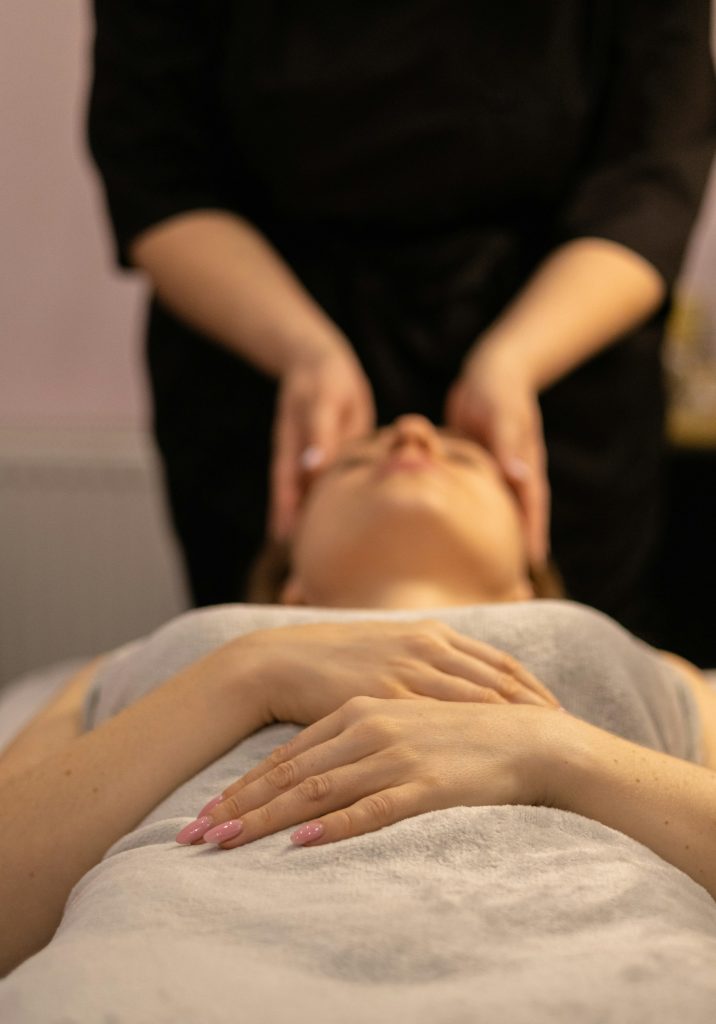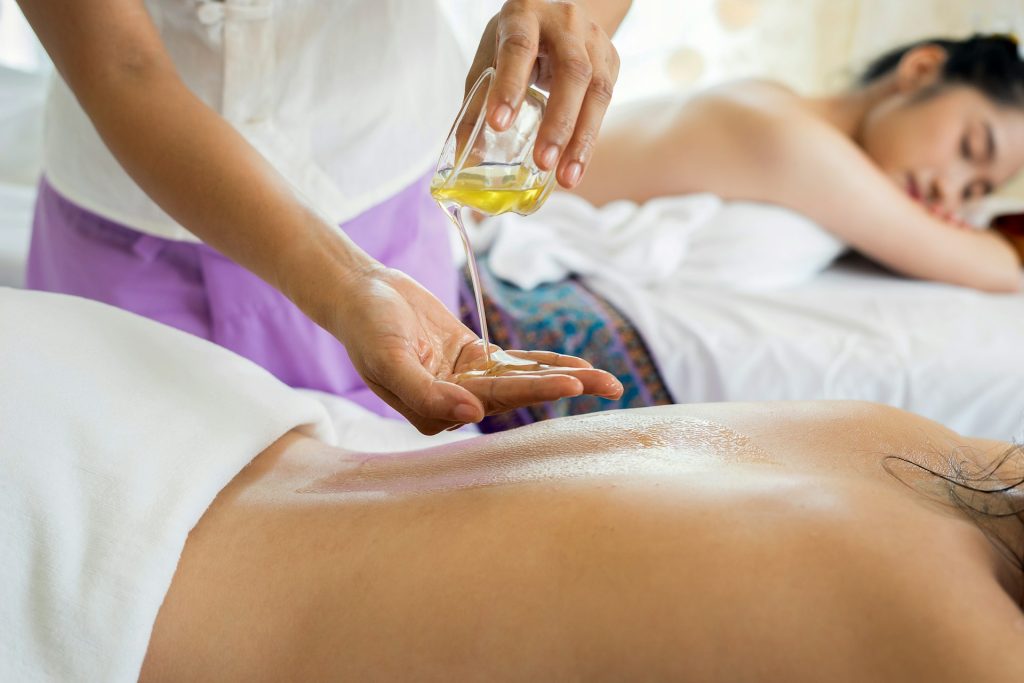 Massage therapy schools are more than just a job; it’s a thriving career path in the growing health, wellness, and preventative care industries. If you’re thinking of becoming a professional massage therapist, choosing the right school is the first major step. The training you receive, the type of program you choose, the accreditation of your school, and the support you get afterward all impact how quickly and successfully you’ll build your career. In this comprehensive guide to massage therapy schools in the USA, we’ll walk you through what massage therapy really involves, why you should consider formal training in the U.S., how to evaluate and choose a good school, what the typical requirements and costs are, what you can expect after graduation, and practical tips to make the most of your education. Whether you want to work in spas, medical clinics, sports facilities, or start your own business, this guide will give you the roadmap you need.
Massage therapy schools are more than just a job; it’s a thriving career path in the growing health, wellness, and preventative care industries. If you’re thinking of becoming a professional massage therapist, choosing the right school is the first major step. The training you receive, the type of program you choose, the accreditation of your school, and the support you get afterward all impact how quickly and successfully you’ll build your career. In this comprehensive guide to massage therapy schools in the USA, we’ll walk you through what massage therapy really involves, why you should consider formal training in the U.S., how to evaluate and choose a good school, what the typical requirements and costs are, what you can expect after graduation, and practical tips to make the most of your education. Whether you want to work in spas, medical clinics, sports facilities, or start your own business, this guide will give you the roadmap you need.
Read Also: Universal Technical Institute in the USA
What is Massage Therapy?
Massage therapy refers to the skilled manipulation of the muscles and soft tissues of the body using stroking, kneading, pressure, stretching, and other techniques to promote relaxation, relieve pain, improve circulation, and aid the healing process.
What are the Types of Massage we have?
-
Swedish massage
One of the most well-liked and frequently used types of massage therapy is Swedish massage. It aims to improve blood circulation, reduce muscle tension, and relax the entire body. The therapist applies circular motions, kneading, and soft, flowing strokes to the upper layers of muscles during a Swedish massage. Beginners or anyone wishing to reduce tension, release tense muscles, and encourage general relaxation may find this kind of massage ideal. Additionally, it can increase blood oxygen flow and improve flexibility, giving you a renewed sense of vitality. This uses gentle, long strokes and kneading, often with the goal of overall relaxation and stress reduction.
-
Deep tissue massage
The deeper layers of muscles and connective tissues are the focus of deep tissue massage, a therapeutic kind of massage. Deep tissue massage relieves chronic muscle stress and stiffness with slower, more forceful strokes and hard pressure, in contrast to Swedish massage, which emphasises relaxation. People who frequently have tightness, soreness, or pain in their muscles due to stress or physical exercise can particularly benefit from it. In order to release tense muscles and enhance blood flow, the therapist targets particular trouble spots, such as the lower back, shoulders, or neck. More intensive pressure is applied to deeper muscle layers, targeting chronic tension, trigger points, and injury recovery.
-
Sports massage
Sports massage is a specific kind of massage intended to assist athletes and active people in performing better, avoiding injuries, and healing more quickly. It focuses on muscles that are overworked and overstressed due to repetitive physical activity, such as training, contests, or simply regular exercise. To increase flexibility and lessen muscular soreness, a sports massage therapist employs a variety of techniques, including deep tissue manipulation, stretching, and joint mobilisation. It can be used to warm up the muscles prior to exercise or to relieve tension and accelerate recovery following physical activity. It is focused on athletes before, during, and after training or competition to optimize performance, prevent injury, and assist recovery.
-
Medical/clinical massage
A specific kind of massage therapy called medical or clinical massage is intended to treat particular physical problems or medical diseases. Its aim is therapeutic and evidence-based, in contrast to general relaxation massage, and it is frequently designed to manage chronic pain, aid in injury rehabilitation, or supplement other medical therapies. Before developing a customised treatment plan, therapists with clinical massage training evaluate a client’s medical history, present symptoms, and particular physical concerns. Deep tissue work, trigger point therapy, myofascial release, and other methods targeted at enhancing circulation, lowering inflammation, and regaining mobility are examples of techniques. Often used in healthcare or rehabilitation settings under the guidance of physicians or physical therapists, dealing with injury recovery, musculoskeletal conditions, and functional restoration.
-
Holistic and Eastern techniques
The goal of holistic and Eastern massage techniques is to treat the body, mind, and spirit as one cohesive whole. These techniques emphasize balance, energy flow, and general wellness, in contrast to traditional Western therapies that might only target muscles or physical symptoms. Shiatsu, Thai massage, acupressure, and reflexology are common Eastern methods. In order to stimulate energy pathways and foster harmony inside the body, these techniques frequently include stretching, rhythmic movements, and applying light pressure to particular spots. Relieving tension, lowering stress, and restoring the body’s natural energy balance, often referred to as Qi in Chinese medicine, are the objectives. Many programs also include modalities like reflexology, myofascial release, energy work, and alternative approaches.
Read Also: Dental Schools in the USA- Everything You Need to Know
Why Choose Massage Therapy Schools in the USA?
 Choosing a high-quality training massage therapy school is essential since massage therapy combines practical expertise with anatomy, physiology, kinesiology, ethics, business skills, and direct patient involvement. The correct institution will give you the professional mentality, practical experience, theoretical foundation, and license preparation you need to be successful. If you’re committing to a career in massage therapy in the U.S., attending a recognized training program here offers several advantages:
Choosing a high-quality training massage therapy school is essential since massage therapy combines practical expertise with anatomy, physiology, kinesiology, ethics, business skills, and direct patient involvement. The correct institution will give you the professional mentality, practical experience, theoretical foundation, and license preparation you need to be successful. If you’re committing to a career in massage therapy in the U.S., attending a recognized training program here offers several advantages:
- Accredited education with licensing preparation: Most states in the U.S. require massage therapists to be licensed, registered, or certified, often involving graduation from a minimum‑hour program plus passing a state or national exam. Schools that are properly accredited or approved ensure you meet those benchmarks.
- Handson training and real‑world experience: Top programs provide supervised practice, clinic hours, and interaction with clients. This allows you to build confidence, refine your technique, and develop professional habits.
- Strong career support and network: Good schools often include job placement assistance, internships, networking events with industry professionals, and guidance for starting your own practice.
- Professional credibility and recognition: Graduating from a reputable program can help employers and clients trust your qualifications. It can also open doors to advanced modalities and higher‑level roles.
- Access to the wellness and health‑care boom: The wellness market in the USA continues growing, with rising demand for therapeutic massage in spas, clinics, wellness centers, sports facilities, and private practice.
Investing in a good massage therapy school sets you up not just for entry‑level work, but for long‑term career development.
Read Also: Vocational Schools in the USA
How to Choose the Right Massage Therapy School
Selecting massage therapy schools is a decision with long‑term consequences. Here are the key criteria to evaluate:
-
Accreditation & Licensing Preparation
Check whether the school is recognized by approved accrediting bodies (e.g., Commission on Massage Therapy Accreditation (COMTA)) or state licensing boards. Accreditation ensures the program meets standards and helps you qualify for required exams. Also, confirm that the program meets your state’s minimum hours and prepares you for the licensing exam (often the MBLEx) and jurisprudence requirements.
-
Curriculum & Hands‑On Training
When selecting a massage therapy school, one of the most important factors to consider is the curriculum. A well-structured program should cover both the foundational knowledge and specialized techniques needed to become a competent massage therapist. Look for schools that include anatomy, physiology, kinesiology, and ethics, alongside training in various massage modalities such as Swedish, deep tissue, sports, medical, or Eastern techniques. A comprehensive curriculum ensures that you not only learn how to perform massages but also understand the science behind them, which is crucial for client safety and effectiveness. Does it cover anatomy, physiology, kinesiology, pathology, ethics, business, and a variety of massage modalities? How many supervised clinic/extern hours are included? Programs with substantial hands‑on components give you valuable real‑world practice.
-
Length & Scheduling
When selecting a massage therapy school, it’s important to consider the length of the program and how it fits into your personal schedule. Programs can vary widely; some are intensive courses that last several months, while others may take a year or more to complete. Understanding the program’s duration helps you plan your education around other commitments, whether you are working, studying, or managing family responsibilities. Programs range in length from 6 months to a year or more. Consider your schedule: full‑time, part‑time, evening classes, or blended formats. For example, some schools offer 12‑month part‑time options for working students.
-
Cost & Financial Aid
Equally important is understanding the financial aid options available. Many schools offer scholarships, grants, or flexible payment plans to help students manage tuition costs. Federal or private student loans may also be an option for eligible candidates. Researching financial aid opportunities can make higher-quality programs more accessible and allow you to focus on your education without unnecessary financial stress. Tuition can vary widely from a few thousand dollars to over $15,000, depending on school, location, facility, and program length. Check if the school accepts federal aid, scholarships, payment plans, or employer sponsorship. Student forums suggest caution when a school doesn’t accept aid.
-
Class Size & Instructor Quality
Instructor quality is equally important. Experienced instructors with professional backgrounds in massage therapy can provide not only technical expertise but also insights into real-world practice, career advice, and professional standards. Look for schools with instructors who are certified, licensed, and actively engaged in the field. They can mentor you, correct your technique, and help you build confidence in your abilities. Smaller class sizes often mean more individual attention and better mentorship. Ask for the instructor’s credentials, experience, and how much one‑on‑one supervision you’ll get during practice.
-
Graduate Outcomes & Licensing Pass Rates
Ask the school for data: graduation rates, licensing exam pass rates, and job placement rates. These figures help you gauge how well the program delivers on its promises. For example, one school’s gainful employment disclosure listed a licensure pass rate of 81%.
-
Location & Facility
Licensing pass rates are equally crucial, especially in regions where massage therapists must be licensed or certified. A high pass rate indicates that the school effectively teaches the knowledge and skills required to meet state or national licensing standards. This is a strong indicator of program quality and suggests that students are well-prepared for both exams and professional practice. Consider location (commute, relocation), available clinic space for hands‑on hours, equipment quality, and whether the school offers externships or partnerships with spas or clinics.
-
Career Support & Networking
Networking opportunities are equally valuable. Being part of a school with strong connections to local clinics, wellness centers, spas, or professional associations allows you to build relationships with experienced therapists, potential employers, and peers in the industry. Networking not only opens doors for job opportunities but also provides mentorship, collaboration, and continued learning throughout your career. Does the program provide job placement help, internships, business startup support (if you wish to go independent), networking with industry professionals, or continuing education options?
Read Also: Real Estate Schools in the USA
Requirements to Enroll in Massage Therapy Schools
 To enroll in massage therapy schools, some key requirements are a High school diploma or equivalent (GED). You must have a Minimum age (often 18 years old). Also, prepare for an Interview or assessment in some cases (to check skills, motivation, background). It is also advisable to do a Background check or criminal history screening, since many states require it for licensing. Importantly, check your Physical stamina and dexterity. The job involves standing, stretching, using your hands and upper body, and maintaining proper body mechanics. Every state has its required hours. State‑specific prerequisite hours depending on licensing requirements. For example, some states require 500 hours or more. Being aware of these requirements early helps you avoid surprises and ensures you select a program that meets your state’s licensing standards.
To enroll in massage therapy schools, some key requirements are a High school diploma or equivalent (GED). You must have a Minimum age (often 18 years old). Also, prepare for an Interview or assessment in some cases (to check skills, motivation, background). It is also advisable to do a Background check or criminal history screening, since many states require it for licensing. Importantly, check your Physical stamina and dexterity. The job involves standing, stretching, using your hands and upper body, and maintaining proper body mechanics. Every state has its required hours. State‑specific prerequisite hours depending on licensing requirements. For example, some states require 500 hours or more. Being aware of these requirements early helps you avoid surprises and ensures you select a program that meets your state’s licensing standards.
Read Also: Work and Travel Opportunities in the USA
Career Opportunities After Graduation from Massage Therapy Schools
Once you’ve completed your training, passed licensing requirements (if required in your state), and have built your skills, you’ll find many possible career positions in the Spa/wellness‑centre therapist. Many grads begin in day spas, resort spas, massage franchises, or wellness centers. They work in hospitals, rehabilitation centers, chiropractic offices, or physical therapy clinics. Also, they give their service to the athletes (amateur or professional) in sports clubs, gyms, universities, or for mobile services.
Some decide to be Self‑employed practitioners or mobile massage business owners. After gaining their desired experience, some therapists establish their own rooms, mobile services, or contract with spas. Also, they provide on‑site services in corporations, airports, or events.
Read Also: Mechanic Schools in the USA
Salary & Job Growth
According to earlier data, the median pay for massage therapists was about $39,860 per year (~$19.17 per hour) in 2016. Updated job boards and wellness trends show this range may be higher now, especially in high‑cost regions or with specialization. Licensing and professional boards note that the number of massage-therapy programs in the U.S. is vast. Also, demand continues due to increasing wellness awareness, aging populations, and integrative health models.
Why Specialization Helps in Massage Therapy Schools
Graduates who specialize (e.g., medical massage, oncology massage, sports massage, neuromuscular therapy, or Myofascial release) often command higher fees or niche placements. For example, the Myotherapy College of Utah emphasizes sports massage and prepares therapists for clinical rehabilitation settings. Massage therapy is a lifelong learning career. Many states require continuing education for license renewal. Additional certifications or advanced training (e.g., trigger‑point therapy, prenatal or pediatric massage, ergonomic massage) can broaden your market. A school article noted that 91% of massage therapists pursue continued‑education courses.
Read Also: Best Grants for College in the USA
Tips for Success in Massage Therapy Schools
Here are practical tips to make the most of your education and launch a successful career:
- Be present and engaged in the hands‑on sessions: The more you practice, the more your confidence and skills grow.
- Build relationships with instructors and peers: Networking early helps you access externships, job referrals, and mentorship. Ask for internships or clinic practice opportunities because Real‑world experience makes you more employable.
- Embrace self‑care and proper body mechanics: Since the job is physically demanding, staying healthy is key. One article noted the importance of posture, stretch, and body mechanics.
- Stay organised with licensure and exam requirements: Know your state’s licensing steps, exam fees, renewal rules, and continuing‑education mandates.
- Develop soft skills: Communication, professionalism, hygiene, ethics, and client interaction matter just as much as technique.
- Plan your career path early: Think about whether you want to be an employee, mobile therapist, clinic practitioner, or business owner — this will guide your specialization and business skills.
- Keep learning: After graduation, continue by taking advanced workshops, certification courses, and staying current with industry trends.
- Save money and manage debt: Since tuition can add up, avoid unnecessary debt by choosing wisely, budgeting, and leveraging payment plans or employer sponsorships.
Read Also: Surgical Technologist Jobs in the USA Paying $134,000 Yearly
Conclusion
Choosing the right massage therapy schools in the USA is a key decision. This will lay the foundation for your career in the wellness industry. From understanding what massage therapy involves to selecting a high‑quality program to launching your career afterward, each step matters. When evaluating massage therapy schools, focus on accreditation. Also, consider hands‑on training, cost, scheduling, instructor quality, graduate outcomes, and location. Ensure you’ll be well‑prepared for licensing and employment. Remember that investment in your education is not just financial; it’s time, dedication, and effort. Whether you aim to help clients relax after a busy day, support athletes’ recovery, assist patients in clinical rehabilitation, or run your own practice, the right training will equip you with the skills, confidence, and credentials you need.
